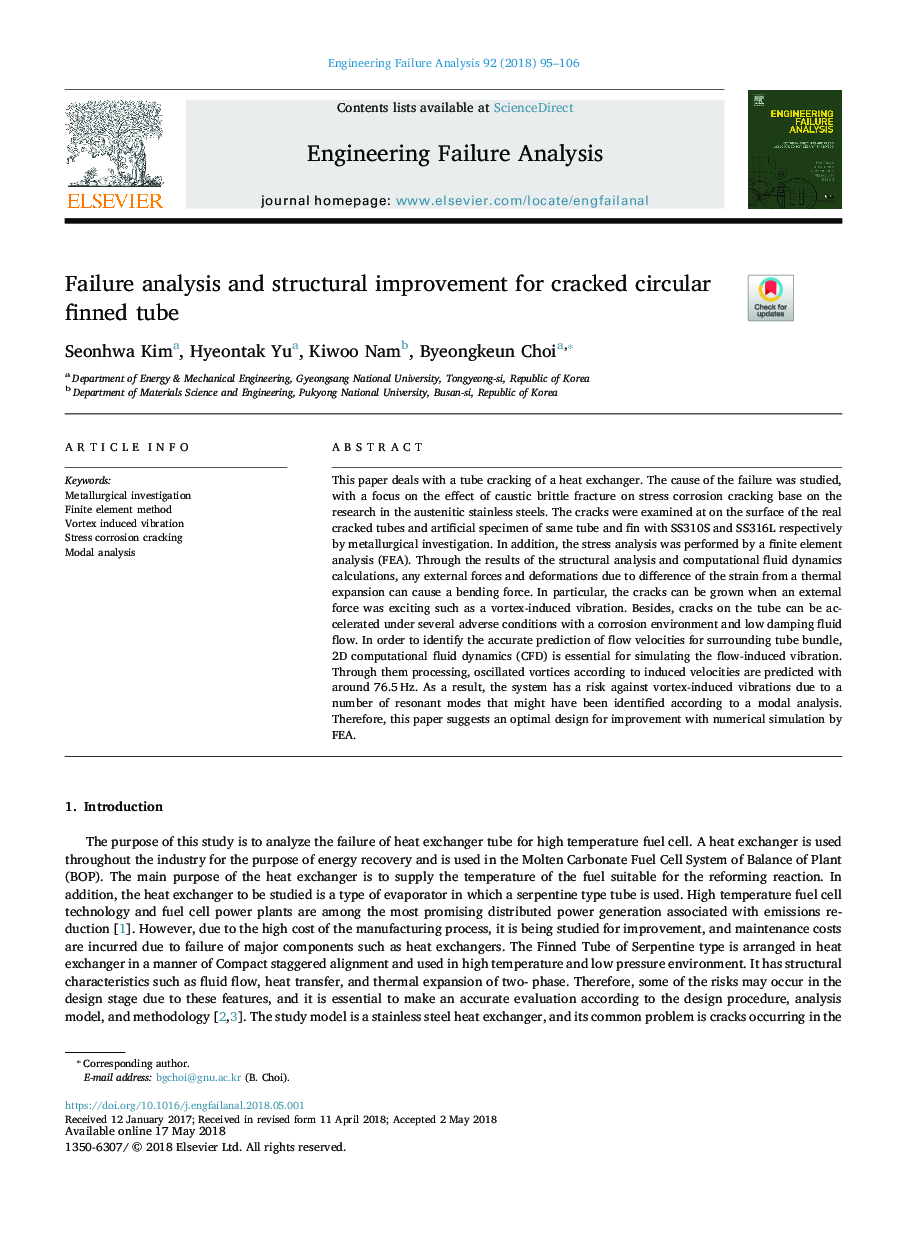| Article ID | Journal | Published Year | Pages | File Type |
|---|---|---|---|---|
| 7167043 | Engineering Failure Analysis | 2018 | 12 Pages |
Abstract
This paper deals with a tube cracking of a heat exchanger. The cause of the failure was studied, with a focus on the effect of caustic brittle fracture on stress corrosion cracking base on the research in the austenitic stainless steels. The cracks were examined at on the surface of the real cracked tubes and artificial specimen of same tube and fin with SS310S and SS316L respectively by metallurgical investigation. In addition, the stress analysis was performed by a finite element analysis (FEA). Through the results of the structural analysis and computational fluid dynamics calculations, any external forces and deformations due to difference of the strain from a thermal expansion can cause a bending force. In particular, the cracks can be grown when an external force was exciting such as a vortex-induced vibration. Besides, cracks on the tube can be accelerated under several adverse conditions with a corrosion environment and low damping fluid flow. In order to identify the accurate prediction of flow velocities for surrounding tube bundle, 2D computational fluid dynamics (CFD) is essential for simulating the flow-induced vibration. Through them processing, oscillated vortices according to induced velocities are predicted with around 76.5â¯Hz. As a result, the system has a risk against vortex-induced vibrations due to a number of resonant modes that might have been identified according to a modal analysis. Therefore, this paper suggests an optimal design for improvement with numerical simulation by FEA.
Related Topics
Physical Sciences and Engineering
Engineering
Industrial and Manufacturing Engineering
Authors
Seonhwa Kim, Hyeontak Yu, Kiwoo Nam, Byeongkeun Choi,
